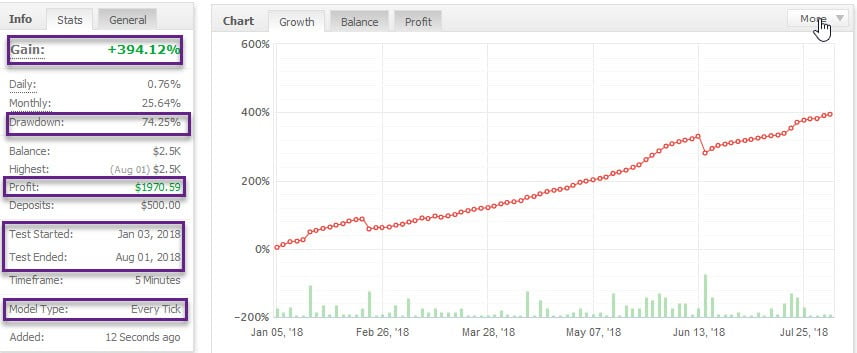
Your lot size (in mini lots) = $10/ ($1 x 50) = mini lot. Converting it to micro lots, it becomes 2 micro lots. Final words. The lot size is a concept in forex trading used in measuring your position size and is defined as the number of currency units you are willing to buy or sell when you enter a trade Jun 08, · Thus, if we gain 5 pips, but we traded with our maximum lots (as allowed by using our risk factor), we would gain 5 pips x 6 lots, or 30 pips. 30 Pips x = $ Putting It All Together: If we have $ in our account, in order to earn a 20% return (regardless of time frame) we would need to earn $60 ($ x 20% = $60) It is one of the prerequisites to get familiar with for Forex starters. Standard Lots. This is the standard size of one Lot which is , units. Units referred to the base currency being traded. When someone trades EUR/USD, the base currency is the EUR and therefore, 1 Lot or , units worth , EURs. Mini Lots. Now, let’s use Estimated Reading Time: 5 mins
What is a Lot in Forex? - blogger.com
John Russell is an experienced web developer who has written about domestic and foreign markets and forex trading for The Balance.
He has a background in management consulting, database and administration, and website planning. Today, he is the owner and lead developer of development agency JS Web Solutions, which provides custom web design and web hosting for small businesses and professionals, 300 lot in forex. When you first get your feet wet with forex trainingyou'll learn about trading lots. In the context of forex trading, a lot refers to a batch of currency the trader controls. The lot size is variable.
Typical designations for lot size include standard lots, mini lots, and micro lots. It is important to note that the lot size directly impacts and indicates the amount of risk you're taking, 300 lot in forex. Finding the best lot size with a tool like a risk management calculator or something similar with a desired output can help you determine the best lot size based on your current trading account assets, whether you're making a practice trade or trading live, as well as help you understand the amount you would like to risk.
The trading lot size directly impacts how much a market move affects your accounts. For example, a pip move on a small trade will not 300 lot in forex felt nearly as much as the same pip move on a very large trade size, 300 lot in forex. You will come across different lot sizes in your trading career, and they can be explained with the help of a 300 lot in forex analogy borrowed from one of the most respected books in the trading business.
Micro lots are the smallest tradeable lot available to most brokers. A micro lot is a lot of 1, units of your account funding currency. If your account is funded in U. If you are trading a dollar-based pair, 1 pip would be equal to 10 cents. Before micro-lots, there were mini lots. A mini lot is 10, units of your account funding currency. If you are a beginner and you want to start trading using 300 lot in forex lots, make sure that you're well-capitalized. It's up to you to decide your ultimate risk tolerance.
A standard lot is a ,unit lot. So most retail traders with small accounts don't trade in standard lots. Most forex traders that you come across are going to be trading mini lots or micro-lots. It might not feel glamorous, but keeping your lot size within reason relative to your account size will help you preserve your trading capital to continue trading for the long term.
If you have had the pleasure of reading Mark Douglas' Trading In The Zoneyou may remember the analogy he provides to traders he has coached, which he shares in the book.
In short, Douglas recommends likening the lot size that you trade and how market moves would affect you, to the amount of support you have under you while walking over a valley when something 300 lot in forex happens.
To illustrate this example, a very small trade size relative to your account capital would be like walking over a valley on a very wide, stable bridge where little would disturb you even if there was a storm or heavy rains. Now imagine that the larger the trade you place the smaller and riskier the support or bridge under you becomes. When you place an extremely large trade size relative to your account balance, the bridge gets as narrow as a tightrope wire, such that any small movement in the market would be like a gust of wind in the example, and could send a trader the point of no return.
Trading Forex Trading. By Full Bio Follow Linkedin. Follow Twitter. Read The Balance's editorial policies. Reviewed by.
Full Bio Follow Linkedin. Gordon Scott, CMT, is a licensed broker, 300 lot in forex, active investor, and proprietary day trader. He has provided 300 lot in forex to individual traders and investors for over 20 years. He formerly served as the Managing Director of the CMT® Program for the CMT Association.
Article Reviewed on May 22, Read The Balance's Financial Review Board, 300 lot in forex. Article Sources.
HOW TO GROW $100 TO $2,000 IN 3 DAYS TRADING FOREX IN 2020!
, time: 9:53Choosing a Lot Size in Forex Trading

May 22, · A standard lot is a ,unit lot. 1 That is a $, trade if you are trading in dollars. Trading with this size of position means that the trader's account value will fluctuate by $10 for each one pip move. For a trader that has only $2, in their account (usually the minimum required to trade a standard lot) it means a pip move Estimated Reading Time: 4 mins Your lot size (in mini lots) = $10/ ($1 x 50) = mini lot. Converting it to micro lots, it becomes 2 micro lots. Final words. The lot size is a concept in forex trading used in measuring your position size and is defined as the number of currency units you are willing to buy or sell when you enter a trade Dec 05, · Forex is commonly traded in specific amounts called lots, or basically the number of currency units you will buy or sell. A “ lot” is a unit measuring a transaction amount. When you place orders on your trading platform, orders are placed in sizes quoted in lots. It’s like an egg carton (or egg box in British English).Estimated Reading Time: 5 mins
No comments:
Post a Comment